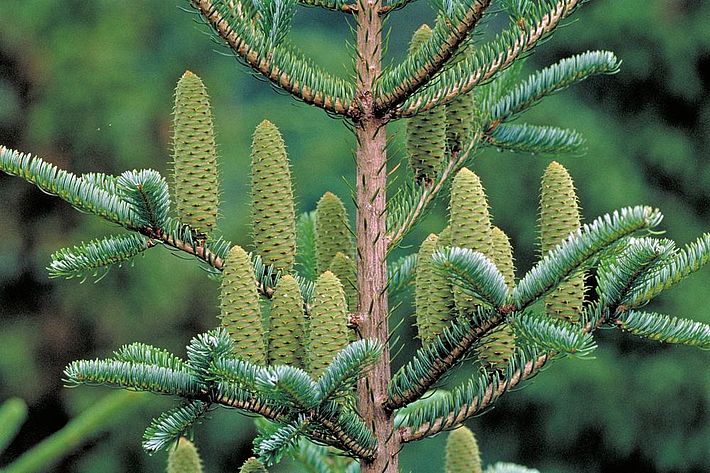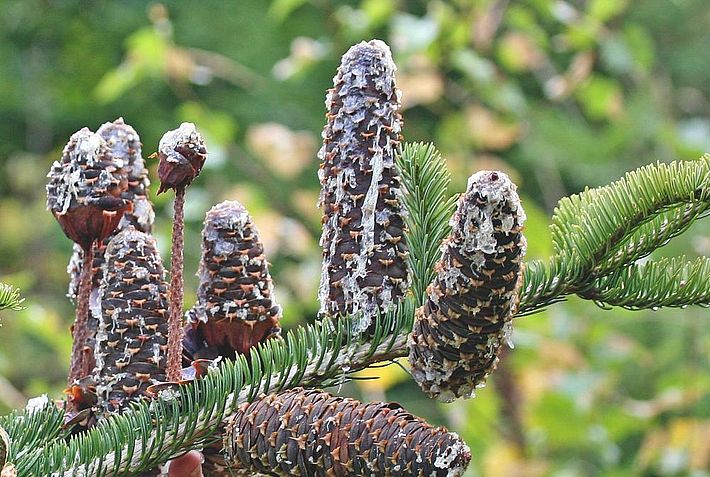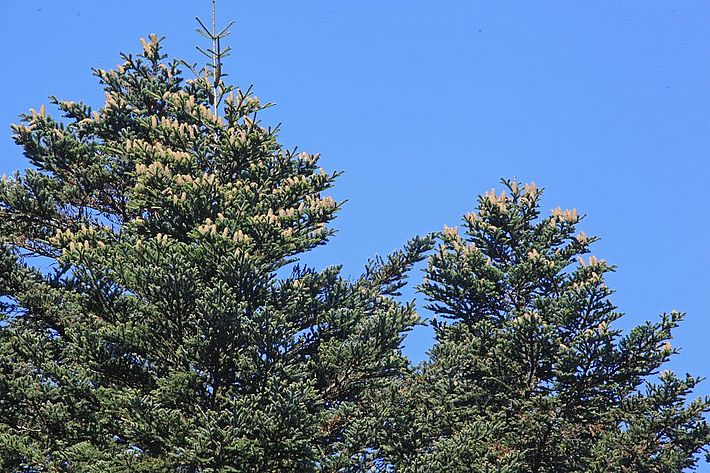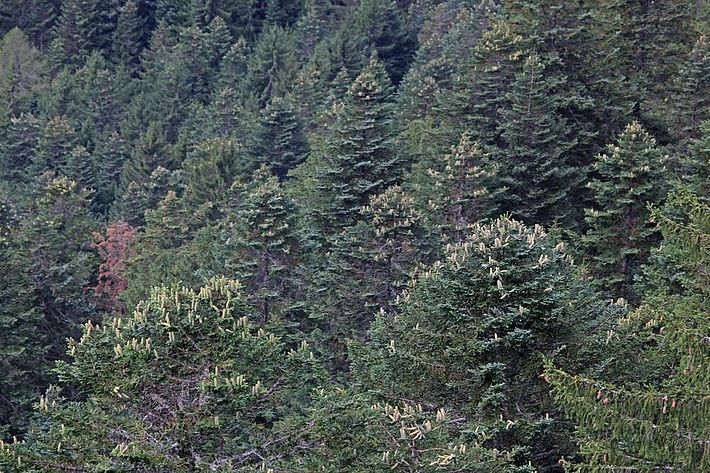Abies alba Mill. | F: Sapin blanc | I: Abete bianco, abezzo | R: Aviez | D: Weisstanne ¶
General information on the silver fir ¶
The third most common tree species in Switzerland (11.8% of the total number of stems) occurs mainly in the western Jura, the central Swiss Plateau and the Pre-Alps and grows particularly densely between 800 and 1000 m a.s.l.1. In certain areas it is completely absent, for example in the Engadine, the Obergoms, the Mattertal and the Davos region1.
Blooming ¶
The flowers of the silver fir are unisexual and bloom shortly before the new shoots appear between the end of April and mid-June. The female flowers are mainly found in the upper crown area, in green, upright cones (Fig. 1), while the smaller male cones are located all over the tree on the underside of the previous year's shoots.
Fruits ¶
The cones ripen in September and remain erect. They are only found on branches at the top of the tree (Fig. 3). In October the seed scales fall off and the small, winged seeds are dispersed by the wind. What remains is the cone spindle (Fig. 2), which sometimes remains on the branch for several years.
Seed masting behaviour ¶
The silver fir produces large amounts of seed every 1 to 3 years2. Whether and how masting phenomena are controlled by climatic factors is little studied. However, there are indications that the silver fir produces a large number of flowers every two years and that pollen quantities are particularly large after dry summers3. Whether numerous fruits develop from this probably depends on frost events and precipitation amounts during the flowering period.
Assessment of seed mast ¶
Time: July to mid-September August. The extent of the current cone attachment can be determined in silver fir from cone formation until shortly before seed ripening. After seed ripening the cones decay, whereby the remaining cone spindle can remain in the crown for several years and is thus an unreliable mast characteristic.
Assessment of fruiting: Seed masting is a phenomenon that does not affect the individual tree, but encompasses entire stands in a larger geographical area. The intensity of silver fir masting can be assessed according to the following key:
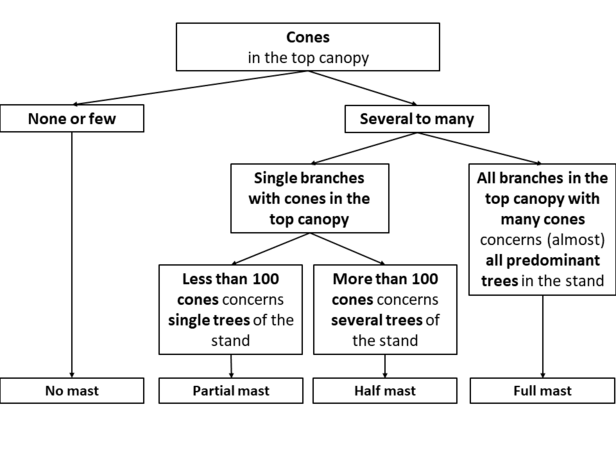
1 Brändli UB (1996) Die häufigsten Waldbäume der Schweiz. Ber. Eidg. Forsch.anst. Wald Schnee Landsch. 342
2 Burri A, Burkart A, Moritzi M, Moser B, Wasem U, Wohlgemuth T (2016) Samenproduktion bei Waldbäumen: eine neue Webseite. Zürcher Wald 1/16: 23-27
3 Pidek IA, Poska A, Kaszewski BM (2015) Taxon-specific pollen deposition dynamics in a temperate forest zone, SE Poland: the impact of physiological rhythmicity and weather controls. Aerobiologia 31: 219-238
Download ¶
